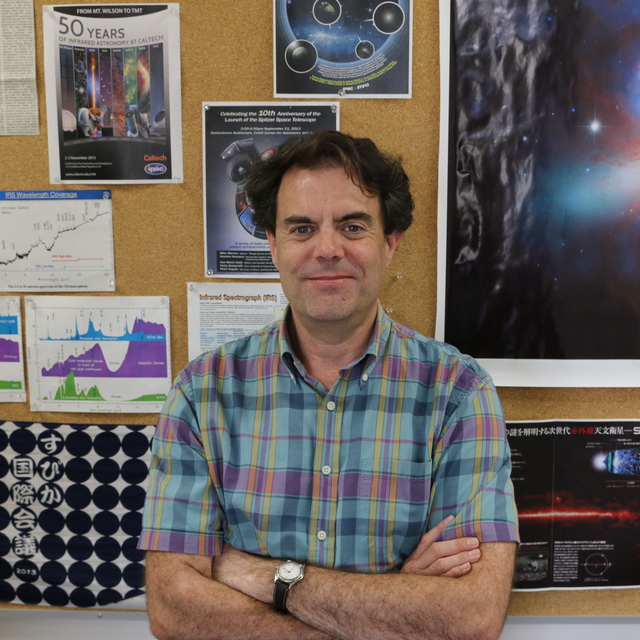November
2017
•
2017PASA...34...59K
Authors
•
Kaneda, H.
•
Ishihara, D.
•
Oyabu, S.
•
Yamagishi, M.
•
Wada, T.
•
Armus, L.
•
Baes, M.
•
Charmandaris, V.
•
Czerny, B.
•
Efstathiou, A.
•
Fernández-Ontiveros, J. A.
•
Ferrara, A.
•
González-Alfonso, E.
•
Griffin, M.
•
Gruppioni, C.
•
Hatziminaoglou, E.
•
Imanishi, M.
•
Kohno, K.
•
Kwon, J.
•
Nakagawa, T.
•
Onaka, T.
•
Pozzi, F.
•
Scott, D.
•
Smith, J. -D. T.
•
Spinoglio, L.
•
Suzuki, T.
•
van der Tak, F.
•
Vaccari, M.
•
Vignali, C.
•
Wang, L.
Abstract
•
The mid-infrared range contains many spectral features associated with large molecules and dust grains such as polycyclic aromatic hydrocarbons and silicates. These are usually very strong compared to fine-structure gas lines, and thus valuable in studying the spectral properties of faint distant galaxies. In this paper, we evaluate the capability of low-resolution mid-infrared spectroscopic surveys of galaxies that could be performed by SPICA. The surveys are designed to address the question how star formation and black hole accretion activities evolved over cosmic time through spectral diagnostics of the physical conditions of the interstellar/circumnuclear media in galaxies. On the basis of results obtained with Herschel far-infrared photometric surveys of distant galaxies and Spitzer and AKARI near- to mid-infrared spectroscopic observations of nearby galaxies, we estimate the numbers of the galaxies at redshift z > 0.5, which are expected to be detected in the polycyclic aromatic hydrocarbon features or dust continuum by a wide (10 deg2) or deep (1 deg2) blind survey, both for a given observation time of 600 h. As by-products of the wide blind survey, we also expect to detect debris disks, through the mid-infrared excess above the photospheric emission of nearby main-sequence stars, and we estimate their number. We demonstrate that the SPICA mid-infrared surveys will efficiently provide us with unprecedentedly large spectral samples, which can be studied further in the far-infrared with SPICA.
Links




